Adler Skywatch: December 2022
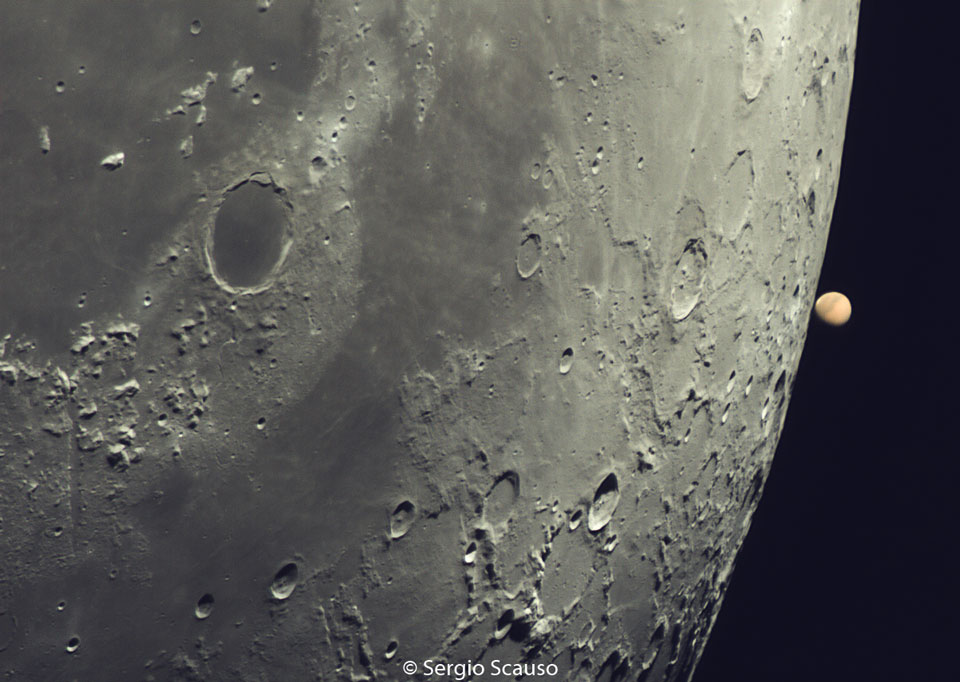
Header Image: Mars reappears on the right side of the moon after an occultation. Image credit: Sergio Scauso
An occultation, a meteor shower, a solstice, a planet parade, and Mars’ brightest appearance of the year highlight this month, December 2022. Here’s your stargazing guide for spotting celestial events.
Mars and The Moon – A Rare Astronomical Event
This month, the planet Mars is at its brightest for the entire year, at nearly minus-2 magnitude on December 8. It will also reach its highest point in the night sky in the past 15 months. Mars rises in the northeast during evening twilight, reaching just above 70 degrees high in the south. It sets in the northwest around the start of morning twilight. In the early evening of December 7, the Red Planet appears very close to the bottom edge of the full Moon.
If you’re viewing from the Chicago area, Mars will disappear behind the Moon shortly after 9:00 pm CST. Roughly an hour later, about 10:06 pm, Mars will reappear on the opposite edge of the Moon. This sky phenomenon is called a lunar occultation. Like eclipses, occultations are visible only at certain times, and only from certain parts of Earth.
To find out if and when the Mars occultation will be visible from your location, visit the Stellarium website. Change the date to December 7, zoom-in on the Moon and Mars, and check out what the sky will show you that night. With Mars as bright as it is this month, its disappearance and reappearance from behind the Moon should be an interesting sight.
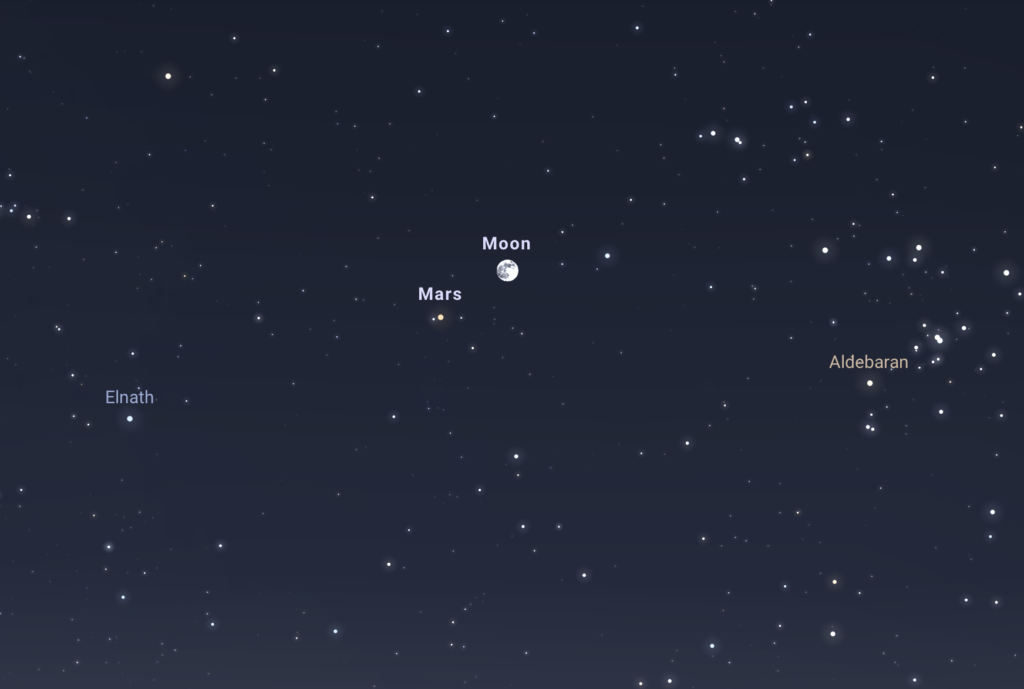
Year-End Planet Parade
This month, the bright planet Jupiter and the slightly-less-bright planet Saturn are roughly 40 degrees apart in the night sky. Both planets will be about halfway up the southern sky during evening twilight. Jupiter is easy to spot due to its brightness. Look about two hand-spans to the right of Jupiter to find Saturn. On December 1, a waxing gibbous Moon appears near Jupiter. Saturn sets in the west-southwest around 10:00 pm CST at the start of the month, and around 9:00 pm CST by month’s end. Jupiter sets in the west around 2:00 am CST at the start of the month and around midnight by month’s end.
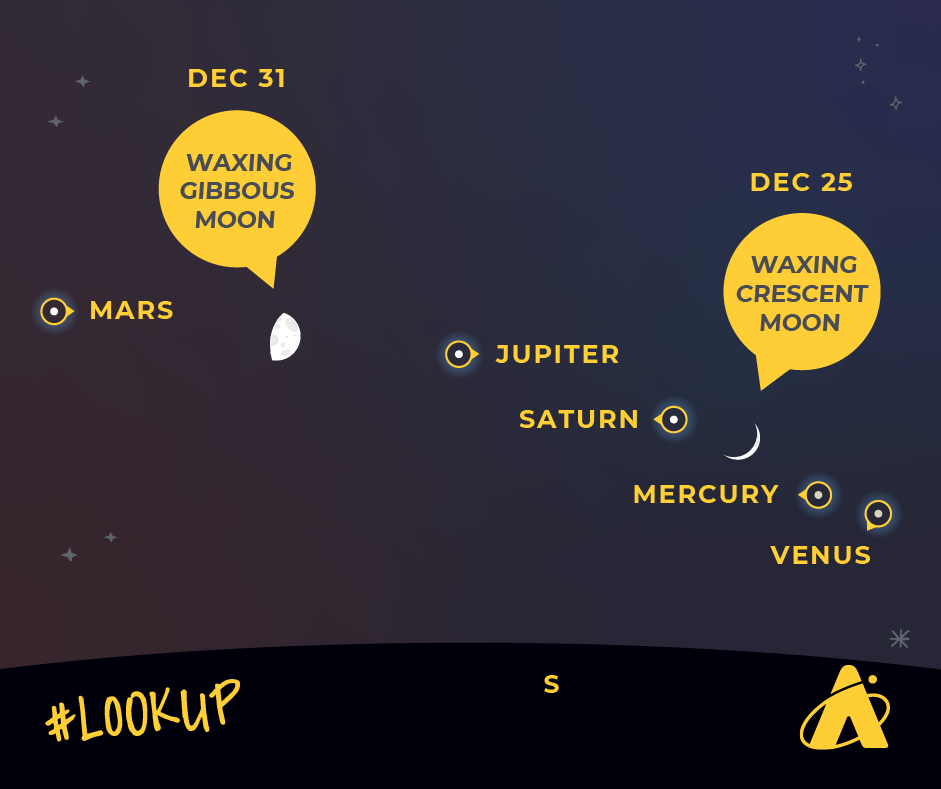
The planets Mercury and Venus appear very close to the Sun for most of this month, making them difficult or impossible to see. However, during the last week of the month, if you have a clear sight-line to the southwest horizon, you may be able to spot the two planets about 45 minutes after sunset, less than ten degrees above the horizon. Venus is by far the brighter of the two. Depending on what day you are viewing, Mercury will be a dimmer dot either just to the left of, above, or to the right of Venus. If you can see Mercury and Venus, you can also see Saturn up and to the left of Venus, Jupiter up and to the left of Saturn, and an orange Mars low in the northeast sky – giving you a chance to view all five naked-eye visible planets at the same time! The Moon also joins this planetary alignment between December 24 – 31.
Jumping Geminids
The Geminids meteor shower occurs this month, with its anticipated peak the night of December 13 through the early-morning darkness of December 14. If skies are clear and dark, there will be upwards of 100 meteors per hour, making it one of the bigger annual meteor showers. Unfortunately, a waning gibbous Moon during the Geminids’ peak is expected to block fainter meteors from view, and thus reduce the meteor-per-hour rate. The shower’s radiant is near the two brightest stars of the constellation Gemini.
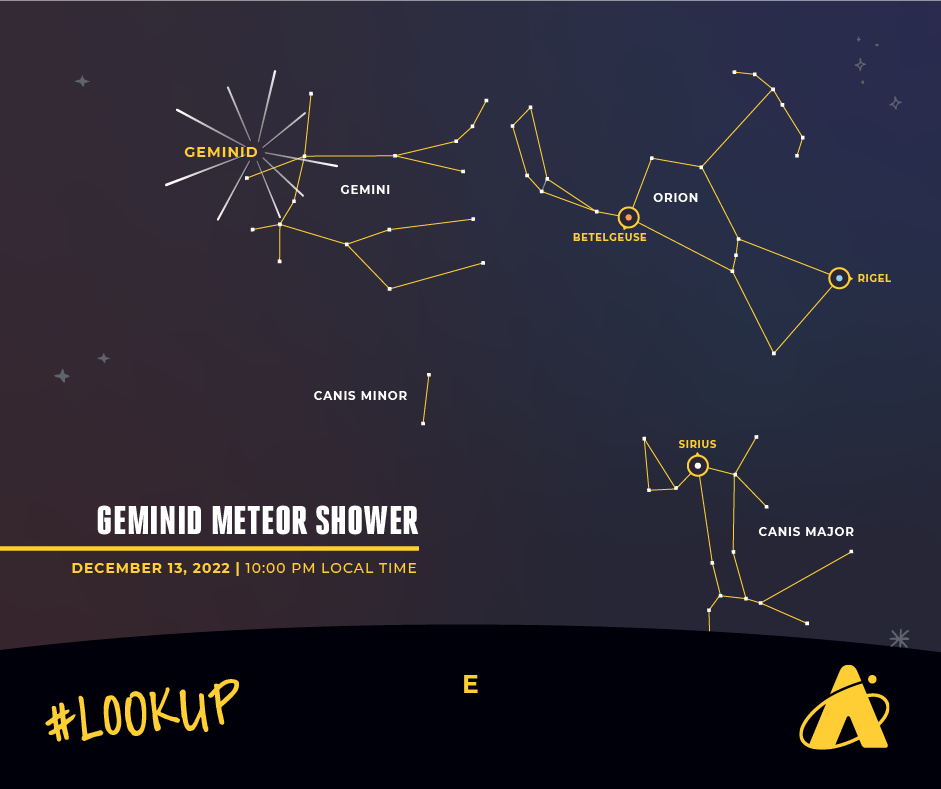
Solstice Sun
The winter solstice occurs December 21, at 3:48 pm CST. The Sun will trace its lowest path for the year across the southern sky. This results in the shortest amount of daylight we will get all year—less than nine hours. Although several cold months are ahead, we’ll be gaining a few moments of daylight each day after the winter solstice until the summer solstice, June 21, 2023.
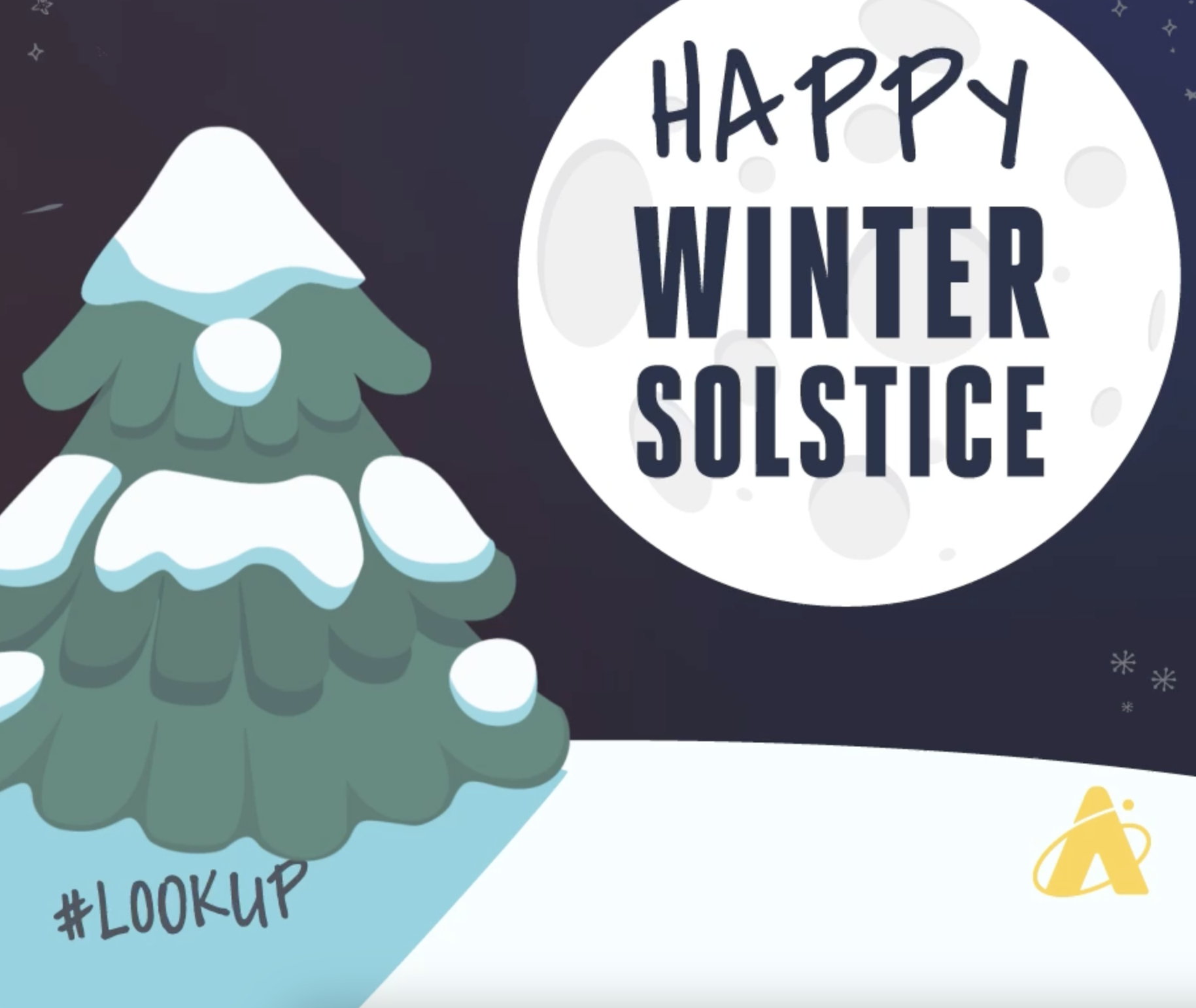
Moon Phases
Full Moon: December 7
Last Quarter Moon: December 16
New Moon: December 23
First Quarter Moon: December 29
Please note that these descriptions are for the Chicago area, using Central time.
Learn From Our Astronomy Educators
Watch exclusive live episodes of Sky Observers Hangout throughout the year on our YouTube channel! Learn how to observe upcoming cosmic happenings, enhance your astrophotography skills and see celestial objects through a telescope virtually with our astronomy educators. On December 7 at 9:00 pm, our astronomy educators will be online to answer your questions about occultations, and give you stargazing tips on how you can spot the Mars occultation of 2022 in your sky as it’s happening. If the weather permits, they’ll even show a LIVE view from inside the Adler’s Doane Observatory! Don’t miss this very special episode of Sky Observers Hangout!
Subscribe To Skywatch Wednesday This December
Tour the night sky with the Adler Planetarium’s Theaters Manager Nick, who uses cutting-edge visualizations, NASA images, and astrophotography to show you what you can see in the night sky throughout the year.






